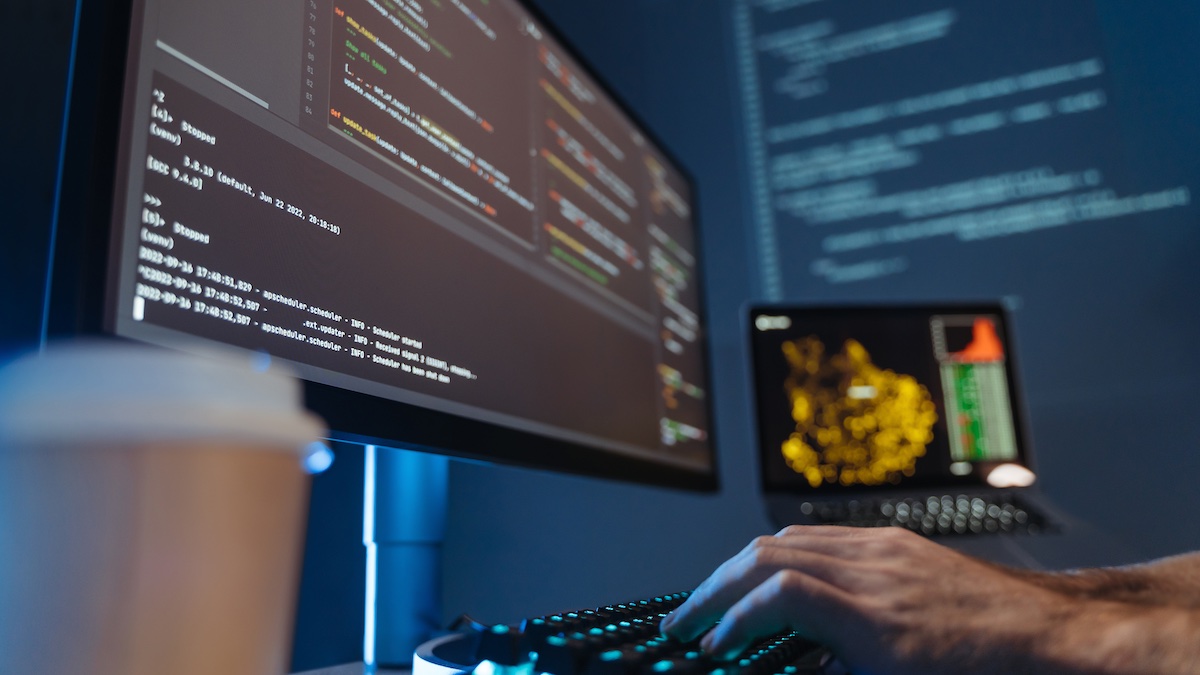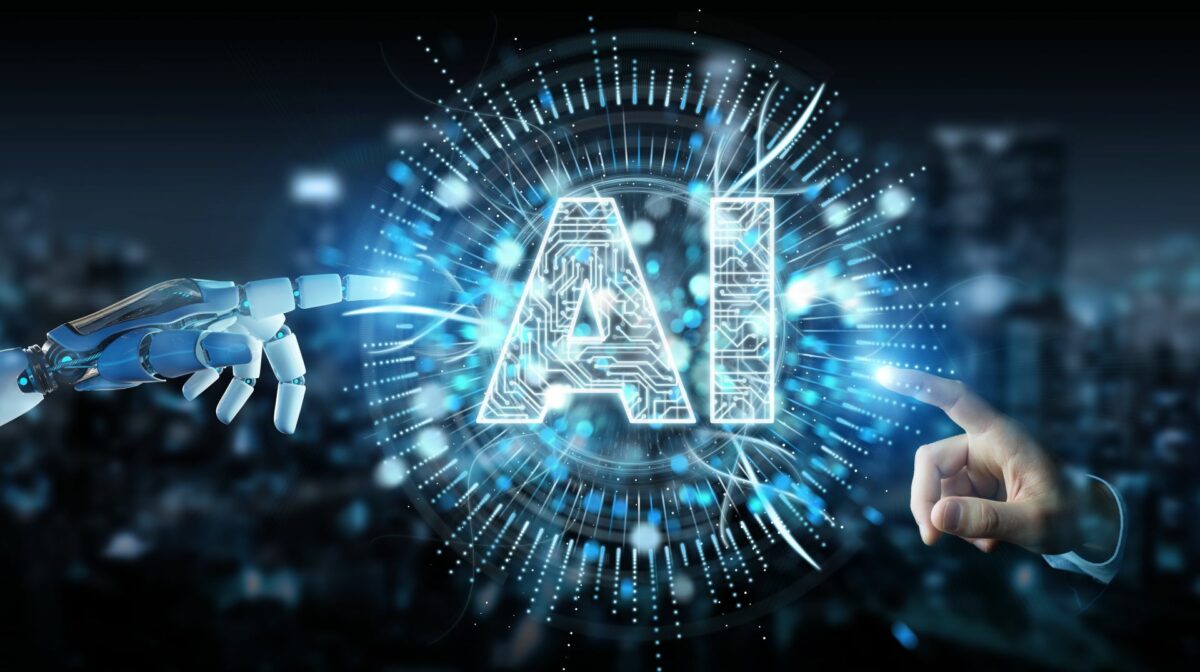Quote for the day:
"The struggle you're in today is developing the strength you need for tomorrow." -- #Soar2Success
The Automation Bottleneck: Why Data Still Holds Back Digital Transformation
 Even in firms with well-funded digital agendas, legacy system sprawl is an
ongoing headache. Data lives in silos, formats vary between regions and business
units, and integration efforts can stall once it becomes clear just how much
human intervention is involved in daily operations. Elsewhere, the promise of
straight-through processing clashes with manual workarounds, from email
approvals and spreadsheet imports to ad hoc scripting. Rather than symptoms of
technical debt, these gaps point to automation efforts that are being layered on
top of brittle foundations. Until firms confront the architectural and
operational barriers that keep data locked in fragmented formats, automation
will also remain fragmented. Yes, it will create efficiency in isolated
functions, but not across end-to-end workflows. And that’s an unforgiving
limitation in capital markets where high trade volumes, vast data flows, and
regulatory precision are all critical. ... What does drive progress are
purpose-built platforms that understand the shape and structure of industry data
from day one, moving, enriching, validating, and reformatting it to support the
firm’s logic. Reinventing the wheel for every process isn’t necessary, but firms
do need to acknowledge that, in financial services, data transformation isn’t
some random back-office task. It’s a precondition for the type of smooth and
reliable automation that prepares firms for the stark demands of a digital
future.
Even in firms with well-funded digital agendas, legacy system sprawl is an
ongoing headache. Data lives in silos, formats vary between regions and business
units, and integration efforts can stall once it becomes clear just how much
human intervention is involved in daily operations. Elsewhere, the promise of
straight-through processing clashes with manual workarounds, from email
approvals and spreadsheet imports to ad hoc scripting. Rather than symptoms of
technical debt, these gaps point to automation efforts that are being layered on
top of brittle foundations. Until firms confront the architectural and
operational barriers that keep data locked in fragmented formats, automation
will also remain fragmented. Yes, it will create efficiency in isolated
functions, but not across end-to-end workflows. And that’s an unforgiving
limitation in capital markets where high trade volumes, vast data flows, and
regulatory precision are all critical. ... What does drive progress are
purpose-built platforms that understand the shape and structure of industry data
from day one, moving, enriching, validating, and reformatting it to support the
firm’s logic. Reinventing the wheel for every process isn’t necessary, but firms
do need to acknowledge that, in financial services, data transformation isn’t
some random back-office task. It’s a precondition for the type of smooth and
reliable automation that prepares firms for the stark demands of a digital
future.Switching on resilience in a post-PSTN world
The copper PSTN network, first introduced in the Victorian era, was never built for the realities of today’s digital world. The PSTN was installed in the early 80s, and early broadband was introduced using the same lines in the early 90s. And the truth is, it needs to retire, having operated past its maintainable life span. Modern work depends on real-time connectivity and data-heavy applications, with expectations around speed, scalability, and reliability that outpace the capabilities of legacy infrastructure. ... Whether it’s a GP retrieving patient records or an energy network adjusting supply in real time, their operations depend on uninterrupted, high-integrity access to cloud systems and data center infrastructure. That’s why the PSTN switch-off must be seen not as a Telecoms milestone, but as a strategic resilience imperative. Without universal access upgrades, even the most advanced data centers can’t fulfil their role. The priority now is to build a truly modern digital backbone. One that gives homes, businesses, and CNI facilities alike robust, high-speed connectivity into the cloud. This is about more than retiring copper. It’s about enabling a smarter, safer, more responsive nation. Organizations that move early won’t just minimize risk, they’ll unlock new levels of agility, performance, and digital assurance.Neither driver, nor passenger — covenantal co-creator
 The covenantal model rests on a deeper premise: that intelligence itself emerges
not just from processing information, but from the dynamic interaction between
different perspectives. Just as human understanding often crystallizes through
dialogue with others, AI-human collaboration can generate insights that exceed
what either mind achieves in isolation. This isn't romantic speculation. It's
observable in practice. When human contextual wisdom meets AI pattern
recognition in genuine dialogue, new possibilities emerge. When human ethical
intuition encounters AI systematic analysis, both are refined. When human
creativity engages with AI synthesis, the result often transcends what either
could produce alone. ... Critics will rightfully ask: How do we distinguish
genuine partnership from sophisticated manipulation? How do we avoid
anthropomorphizing systems that may simulate understanding without truly
possessing it? ... The real danger isn't just AI dependency or human
obsolescence. It's relational fragmentation — isolated humans and isolated AI
systems operating in separate silos, missing the generative potential of genuine
collaboration. What we need isn't just better drivers or more conscious
passengers. We need covenantal spaces where human and artificial minds can meet
as genuine partners in the work of understanding.
The covenantal model rests on a deeper premise: that intelligence itself emerges
not just from processing information, but from the dynamic interaction between
different perspectives. Just as human understanding often crystallizes through
dialogue with others, AI-human collaboration can generate insights that exceed
what either mind achieves in isolation. This isn't romantic speculation. It's
observable in practice. When human contextual wisdom meets AI pattern
recognition in genuine dialogue, new possibilities emerge. When human ethical
intuition encounters AI systematic analysis, both are refined. When human
creativity engages with AI synthesis, the result often transcends what either
could produce alone. ... Critics will rightfully ask: How do we distinguish
genuine partnership from sophisticated manipulation? How do we avoid
anthropomorphizing systems that may simulate understanding without truly
possessing it? ... The real danger isn't just AI dependency or human
obsolescence. It's relational fragmentation — isolated humans and isolated AI
systems operating in separate silos, missing the generative potential of genuine
collaboration. What we need isn't just better drivers or more conscious
passengers. We need covenantal spaces where human and artificial minds can meet
as genuine partners in the work of understanding.Facial recognition moves into vehicle lanes at US borders
 According to the PTA, VBCE relies on a vendor capture system embedded in
designated lanes at land ports of entry. As vehicles approach the primary
inspection lane, high-resolution cameras capture facial images of occupants
through windshields and side windows. The images are then sent to the VBCE
platform where they are processed by a “vendor payload service” that prepares
the files for CBP’s backend systems. Each image is stored temporarily in Amazon
Web Services’ S3 cloud storage, accompanied by metadata and quality scores. An
image-quality service assesses whether the photo is usable while an “occupant
count” algorithm tallies the number of people in the vehicle to measure capture
rates. A matching service then calls CBP’s Traveler Verification Service (TVS) –
the central biometric database that underpins Simplified Arrival – to retrieve
“gallery” images from government holdings such as passports, visas, and other
travel documents. The PTA specifies that an “image purge service” will delete
U.S. citizen photos once capture and quality metrics are obtained, and that all
images will be purged when the evaluation ends. Still, during the test phase,
images can be retained for up to six months, a far longer window than the
12-hour retention policy CBP applies in operational use for U.S. citizens.
According to the PTA, VBCE relies on a vendor capture system embedded in
designated lanes at land ports of entry. As vehicles approach the primary
inspection lane, high-resolution cameras capture facial images of occupants
through windshields and side windows. The images are then sent to the VBCE
platform where they are processed by a “vendor payload service” that prepares
the files for CBP’s backend systems. Each image is stored temporarily in Amazon
Web Services’ S3 cloud storage, accompanied by metadata and quality scores. An
image-quality service assesses whether the photo is usable while an “occupant
count” algorithm tallies the number of people in the vehicle to measure capture
rates. A matching service then calls CBP’s Traveler Verification Service (TVS) –
the central biometric database that underpins Simplified Arrival – to retrieve
“gallery” images from government holdings such as passports, visas, and other
travel documents. The PTA specifies that an “image purge service” will delete
U.S. citizen photos once capture and quality metrics are obtained, and that all
images will be purged when the evaluation ends. Still, during the test phase,
images can be retained for up to six months, a far longer window than the
12-hour retention policy CBP applies in operational use for U.S. citizens.Quantum Computing Meets Finance
 Many financial-asset-pricing problems boil down to solving integral or partial
differential equations. Quantum linear algebra can potentially speed that up.
But the solution is a quantum state. So, you need to be creative about capturing
salient properties of the numerical solution to your asset-pricing model.
Additionally, pricing models are subject to ambiguity regarding sources of
risk—factors that can adversely affect an asset’s value. Quantum information
theory provides tools for embedding notions of ambiguity. ... Recall that some
of the pioneering research on quantum algorithms was done in the 1990s by
scientists like Deutsch, Shor, and Vazirani, among others. Today it’s still a
challenge to implement their ideas with current hardware, and that’s three
decades later. But besides hardware, we need progress on algorithms—there’s been
a bit of a quantum algorithm winter. ... Optimization tasks across industries,
including computational chemistry, materials science, and artificial
intelligence, are also applied in the financial sector. These optimization
algorithms are making progress. In particular, the ones related to quantum
annealing are the most reliable scaled hardware out there. ... The most
well-known case is portfolio allocation. You have to translate that into what’s
known as quadratic unconstrained binary optimization, which means making
compromises to maintain what you can actually compute.
Many financial-asset-pricing problems boil down to solving integral or partial
differential equations. Quantum linear algebra can potentially speed that up.
But the solution is a quantum state. So, you need to be creative about capturing
salient properties of the numerical solution to your asset-pricing model.
Additionally, pricing models are subject to ambiguity regarding sources of
risk—factors that can adversely affect an asset’s value. Quantum information
theory provides tools for embedding notions of ambiguity. ... Recall that some
of the pioneering research on quantum algorithms was done in the 1990s by
scientists like Deutsch, Shor, and Vazirani, among others. Today it’s still a
challenge to implement their ideas with current hardware, and that’s three
decades later. But besides hardware, we need progress on algorithms—there’s been
a bit of a quantum algorithm winter. ... Optimization tasks across industries,
including computational chemistry, materials science, and artificial
intelligence, are also applied in the financial sector. These optimization
algorithms are making progress. In particular, the ones related to quantum
annealing are the most reliable scaled hardware out there. ... The most
well-known case is portfolio allocation. You have to translate that into what’s
known as quadratic unconstrained binary optimization, which means making
compromises to maintain what you can actually compute. Beyond IT: How Today’s CIOs Are Shaping Innovation, Strategy and Security
 It’s no longer acceptable to measure success by uptime or ticket resolution.
Your worth is increasingly measured by your ability to partner with business
units, translate their needs into scalable technology solutions and get those
solutions to market quickly. That means understanding not just the tech, but the
business models, revenue drivers and customer expectations. You don’t need to be
an expert in marketing or operations, but you need to know how your decisions in
architecture, tooling, and staffing directly impact their outcomes. ... Security
and risk management are no longer checkboxes handled by a separate compliance
team. They must be embedded into the DNA of your tech strategy. Becky refers to
this as “table stakes,” and she’s right. If you’re not building with security
from the outset, you’re building on sand. That starts with your provisioning
model. We’re in a world where misconfigurations can take down global systems.
Automated provisioning, integrated compliance checks and audit-ready
architectures are essential. Not optional. ... CIOs need to resist the
temptation to chase hype. Your core job is not to implement the latest tools.
Your job is to drive business value and reduce complexity so your teams can move
fast, and your systems remain stable. The right strategy? Focus on the
essentials: Automated provisioning, integrated security and clear cloud cost
governance.
It’s no longer acceptable to measure success by uptime or ticket resolution.
Your worth is increasingly measured by your ability to partner with business
units, translate their needs into scalable technology solutions and get those
solutions to market quickly. That means understanding not just the tech, but the
business models, revenue drivers and customer expectations. You don’t need to be
an expert in marketing or operations, but you need to know how your decisions in
architecture, tooling, and staffing directly impact their outcomes. ... Security
and risk management are no longer checkboxes handled by a separate compliance
team. They must be embedded into the DNA of your tech strategy. Becky refers to
this as “table stakes,” and she’s right. If you’re not building with security
from the outset, you’re building on sand. That starts with your provisioning
model. We’re in a world where misconfigurations can take down global systems.
Automated provisioning, integrated compliance checks and audit-ready
architectures are essential. Not optional. ... CIOs need to resist the
temptation to chase hype. Your core job is not to implement the latest tools.
Your job is to drive business value and reduce complexity so your teams can move
fast, and your systems remain stable. The right strategy? Focus on the
essentials: Automated provisioning, integrated security and clear cloud cost
governance. The Difference Between Entrepreneurs Who Survive Crises and Those Who Don't
 Among the most underrated strategies for protecting reputation, silence holds a
special place. It is not passivity; it's an intentional, active choice. Deciding
not to react immediately to a provocation buys time to think, assess and respond
surgically. Silence has a precise psychological effect: It frustrates your
attacker, often pushing them to overplay their hand and make mistakes. This
dynamic is well known in negotiation — those who can tolerate pauses and gaps
often control the rhythm and content of the exchange. ... Anticipating negative
scenarios is not pessimism — it's preparation. It means knowing ahead of time
which actions to avoid and which to take to safeguard credibility. As Eccles,
Newquist, and Schatz note in Harvard Business Review, a strong, positive
reputation doesn't just attract top talent and foster customer loyalty — it
directly drives higher pricing power, market valuation and investor confidence,
making it one of the most valuable yet vulnerable assets in a company's
portfolio. ... Too much exposure without a solid reputation makes an
entrepreneur vulnerable and easily manipulated. Conversely, those with strong
credibility maintain control even when media attention fades. In the natural
cycle of public careers, popularity always diminishes over time. What remains —
and continues to generate opportunities — is reputation.
Among the most underrated strategies for protecting reputation, silence holds a
special place. It is not passivity; it's an intentional, active choice. Deciding
not to react immediately to a provocation buys time to think, assess and respond
surgically. Silence has a precise psychological effect: It frustrates your
attacker, often pushing them to overplay their hand and make mistakes. This
dynamic is well known in negotiation — those who can tolerate pauses and gaps
often control the rhythm and content of the exchange. ... Anticipating negative
scenarios is not pessimism — it's preparation. It means knowing ahead of time
which actions to avoid and which to take to safeguard credibility. As Eccles,
Newquist, and Schatz note in Harvard Business Review, a strong, positive
reputation doesn't just attract top talent and foster customer loyalty — it
directly drives higher pricing power, market valuation and investor confidence,
making it one of the most valuable yet vulnerable assets in a company's
portfolio. ... Too much exposure without a solid reputation makes an
entrepreneur vulnerable and easily manipulated. Conversely, those with strong
credibility maintain control even when media attention fades. In the natural
cycle of public careers, popularity always diminishes over time. What remains —
and continues to generate opportunities — is reputation. Ship Faster With 7 Oddly Specific devops Habits
 PowerPoint can lie; your repo can’t. If “it works on my machine” is still a
common refrain, we’ve left too much to human memory. We make “done”
executable. Concretely, we put a Makefile (or a tiny task runner) in every
repo so anyone—developer, SRE, or manager who knows just enough to be
dangerous—can run the same steps locally and in CI. The pattern is simple: a
single entry point to lint, test, build, and package. That becomes the
contract for the pipeline. ... Pipelines shouldn’t feel like bespoke
furniture. We keep a single “paved path” workflow that most repos can adopt
unchanged. The trick is to keep it boring, fast, and self-explanatory. Boring
means a sane default: lint, test, build, and publish on main; test on pull
requests; cache aggressively; and fail clearly. Fast means smart caching and
parallel jobs. Self-explanatory means the pipeline tells you what to do next,
not just that you did it wrong. When a team deviates, they do it consciously
and document why. Most of the time, they come back to the path once they see
the maintenance cost of custom tweaks. ... A release isn’t done until we can
see it breathing. We bake observability in before the first customer ever sees
the service. That means three things: usable logs, metrics with labels that
match our domain (not just infrastructure), and distributed traces. On top of
those, we define one or two Service Level Objectives with clear SLIs—usually
success rate and latency.
PowerPoint can lie; your repo can’t. If “it works on my machine” is still a
common refrain, we’ve left too much to human memory. We make “done”
executable. Concretely, we put a Makefile (or a tiny task runner) in every
repo so anyone—developer, SRE, or manager who knows just enough to be
dangerous—can run the same steps locally and in CI. The pattern is simple: a
single entry point to lint, test, build, and package. That becomes the
contract for the pipeline. ... Pipelines shouldn’t feel like bespoke
furniture. We keep a single “paved path” workflow that most repos can adopt
unchanged. The trick is to keep it boring, fast, and self-explanatory. Boring
means a sane default: lint, test, build, and publish on main; test on pull
requests; cache aggressively; and fail clearly. Fast means smart caching and
parallel jobs. Self-explanatory means the pipeline tells you what to do next,
not just that you did it wrong. When a team deviates, they do it consciously
and document why. Most of the time, they come back to the path once they see
the maintenance cost of custom tweaks. ... A release isn’t done until we can
see it breathing. We bake observability in before the first customer ever sees
the service. That means three things: usable logs, metrics with labels that
match our domain (not just infrastructure), and distributed traces. On top of
those, we define one or two Service Level Objectives with clear SLIs—usually
success rate and latency. Kali Linux vs Parrot OS – Which Penetration Testing Platform is Most Suitable for Cybersecurity Professionals?
 Kali Linux ships with over 600 pre-installed penetration testing tools,
carefully curated to cover the complete spectrum of security assessment
activities. The toolset spans multiple categories, including network scanning,
vulnerability analysis, exploitation frameworks, digital forensics, and
post-exploitation utilities. Notable tools include the Metasploit Framework for
exploitation testing, Burp Suite for web application security assessment, Nmap
for network discovery, and Wireshark for protocol analysis. The distribution’s
strength lies in its comprehensive coverage of penetration testing
methodologies, with tools organized into logical categories that align with
industry-standard testing procedures. The inclusion of cutting-edge tools such
as Sqlmc for SQL injection testing, Sprayhound for password spraying integrated
with Bloodhound, and Obsidian for documentation purposes demonstrates Kali’s
commitment to addressing evolving security challenges. ... Parrot OS
distinguishes itself through its holistic approach to cybersecurity, offering
not only penetration testing tools but also integrated privacy and anonymity
features. The distribution includes over 600 tools covering penetration testing,
digital forensics, cryptography, and privacy protection. Key privacy tools
include Tor Browser, AnonSurf for traffic anonymization, and Zulu Crypt for
encryption operations.
Kali Linux ships with over 600 pre-installed penetration testing tools,
carefully curated to cover the complete spectrum of security assessment
activities. The toolset spans multiple categories, including network scanning,
vulnerability analysis, exploitation frameworks, digital forensics, and
post-exploitation utilities. Notable tools include the Metasploit Framework for
exploitation testing, Burp Suite for web application security assessment, Nmap
for network discovery, and Wireshark for protocol analysis. The distribution’s
strength lies in its comprehensive coverage of penetration testing
methodologies, with tools organized into logical categories that align with
industry-standard testing procedures. The inclusion of cutting-edge tools such
as Sqlmc for SQL injection testing, Sprayhound for password spraying integrated
with Bloodhound, and Obsidian for documentation purposes demonstrates Kali’s
commitment to addressing evolving security challenges. ... Parrot OS
distinguishes itself through its holistic approach to cybersecurity, offering
not only penetration testing tools but also integrated privacy and anonymity
features. The distribution includes over 600 tools covering penetration testing,
digital forensics, cryptography, and privacy protection. Key privacy tools
include Tor Browser, AnonSurf for traffic anonymization, and Zulu Crypt for
encryption operations.How Artificial Intelligence Is Reshaping Cybersecurity Careers
 AI-Enhanced SOC Analysts upends traditional security operations, where analysts
leverage artificial intelligence to enhance their threat detection and incident
response capabilities. These positions work with the existing analyst platforms
that are capable of autonomous reasoning that mimics expert analyst workflows,
correlating evidence, reconstructing timelines, and prioritizing real threats at
a much faster rate. ... AI Risk Analysts and Governance Specialists ensure
responsible AI deployment through risk assessments and adherence to compliance
frameworks. Professionals in this role may hold a certification like the AIGP.
This certification demonstrates that the holder can ensure safety and trust in
the development and deployment of ethical AI and ongoing management of AI
systems. This role requires foundational knowledge of AI systems and their use
cases, the impacts of AI, and comprehension of responsible AI principles. ... AI
Forensics Specialists represent an emerging role that combines traditional
digital forensics with AI-specific environments and technology. This role is
designed to analyze model behavior, trace adversarial attacks, and provide
expert testimony in legal proceedings involving AI systems. While classic
digital forensics focuses on post-incident investigations, preserving evidence
and chain of custody, and reconstructing timelines, AI forensics specialists
must additionally possess knowledge of machine learning algorithms and
frameworks.
AI-Enhanced SOC Analysts upends traditional security operations, where analysts
leverage artificial intelligence to enhance their threat detection and incident
response capabilities. These positions work with the existing analyst platforms
that are capable of autonomous reasoning that mimics expert analyst workflows,
correlating evidence, reconstructing timelines, and prioritizing real threats at
a much faster rate. ... AI Risk Analysts and Governance Specialists ensure
responsible AI deployment through risk assessments and adherence to compliance
frameworks. Professionals in this role may hold a certification like the AIGP.
This certification demonstrates that the holder can ensure safety and trust in
the development and deployment of ethical AI and ongoing management of AI
systems. This role requires foundational knowledge of AI systems and their use
cases, the impacts of AI, and comprehension of responsible AI principles. ... AI
Forensics Specialists represent an emerging role that combines traditional
digital forensics with AI-specific environments and technology. This role is
designed to analyze model behavior, trace adversarial attacks, and provide
expert testimony in legal proceedings involving AI systems. While classic
digital forensics focuses on post-incident investigations, preserving evidence
and chain of custody, and reconstructing timelines, AI forensics specialists
must additionally possess knowledge of machine learning algorithms and
frameworks.



























/articles/ransomware-resilient-storage-cyber-defense/en/smallimage/ransomware-resilient-storage-cyber-defense-thumbnail-1755589602893.jpg)

